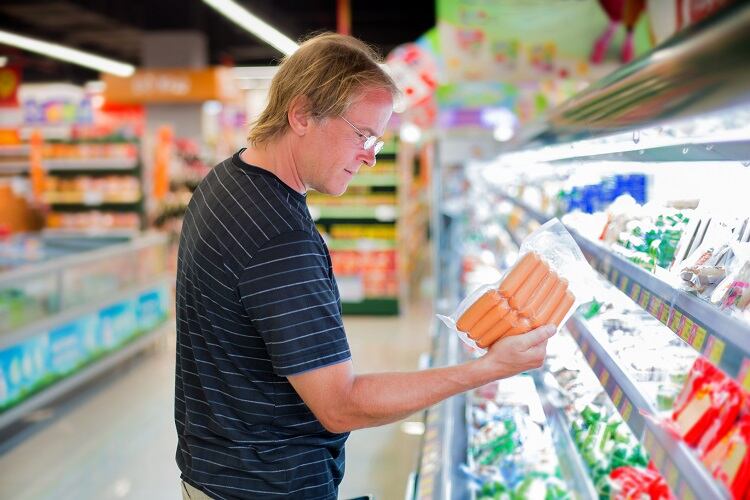The European food industry is waiting with bated breath to hear which harmonised front-of-pack (FOP) labelling scheme will be proposed by the European Commission in the coming year.
Will it be France’s Nutri-Score, Italy’s Nutrinform, Sweden’s Keyhole, the UK’s traffic light label, or a new scheme altogether?
The jury is still out. And in the meantime, Spain’s meat industry is making its position clear: “We are totally against the Nutri-Score labelling system,” said Sergio Martín Rubio, head of the Technical Department at the Spanish National Association of Meat Industries (ANICE).
The non-profit, made up of more than 650 companies across Spain’s meat sector – from slaughterhouses to cutting plants and meat processors – is supportive of a mandatory FOP label in principle.
But at an online event hosted by think tank Farm Europe and subsidiary Eat Europe, Rubio stressed the chosen scheme ‘must be backed up by scientific evidence’.
“However, the Spanish meat industry is extremely concerned and strongly reject the imposition of the Nutri-Score model as the reference for FOP nutrition labelling in the European Union.”
Dissecting the algorithm
Amongst the reasons ANICE dismisses Nutri-Score for a mandatory EU-wide rollout is its colour-coded format.
“Nutrition labelling schemes that use colour codes, such as Nutri-Score, focus on negative nutrients. They leave aside the overall nutritional contribution of foods, discriminating foods into ‘good’ and ‘bad’ ones,” Rubio told delegates at the event. “And of course, they forget about one of the important elements, which is leading an active lifestyle with a balanced diet.”
The ANICE technical lead believes that all foods play an ‘important role’ in nutrition, and meat products are no different. “Meat and meat products provide multiple nutritional [benefits], such as vitamins, protein, and minerals, which are important for the proper development of our bodies and wellbeing, especially for kids, adolescents, and pregnant women etc.”
Heme iron, for example, is a ‘key nutritional feature of meat’. Derived from haemoglobin, heme iron is and found in animal-based foods such and meat, fish and poultry. Although nonheme iron is available from plant sourced, heme iron is the better absorbed of the two.
Vitamin B12 is another. “Vitamin B12 can only be obtained from foods of animal origin, so not eating meat can be a risk factor for nutritional deficiencies that can lead to diseases such as anaemia or sarcopenia,” we were told.
In criticising what the labelling scheme does and does not include in its calculations, Rubio lamented that industrial trans fatty acids –contained in hardened vegetable fats – are not factored in.
“Meat and meat products do not contain trans fatty acids of industrial origin,” said Rubio, [and yet] Nutri-Score doesn’t assess if a food contains trans fatty acids [or not].”
A question of quantity
Rubio also takes issue with the label’s categorisation of products, many of which are judged ‘unfairly’, he continued, pointing to meat, olive oil, and orange juice. “These are penalised by some algorithms and calculation methods [with a] ‘questionable’ scientific based, so to speak.”
Nutri-Score ranks food from -15 for the ‘healthiest’ product to +40 for those that are ‘less healthy’. On the basis of this score, the product receives a letter with a corresponding colour code: from dark green (A) to dark red (F). The algorithm is based on a standard amount (100g) of product.
But at the Farm Europe event, Rubio stressed this quantity does not reflect the usual portion of meat consumed. In Spain, for example, the Ministry of Agriculture, Fisheries and Food estimates that consumers eat approximately 35g of meat products per day.
“Thirty-five grams per day is very far from the figure represented by Nutri-Score – which is 100g.”
ANICE’s technical lead continued: “So it’s necessary to establish a harmonised definition of the portion size of meat products that really takes into account the amount that is actually consumed.”
Sacrificing protein for a better score?
Whether a product’s entire protein content is always taken into account by Nutri-Score was also brought into question.
As a general rule, if a food or drink scores 11 or more ‘negative’ points, then the ‘positive’ points from its protein content cannot be taken into account, unless it also score five points for the percentage of fruit, vegetables, nuts and olive, rapeseed and walnut oil, Rubio explained.
In a situation where protein content is not taken into account by the algorithm, ANICE’s technical lead raised concerns that companies may reduce the protein content of such a product in order to obtain a better score, since protein increases energy content. This would not only discourage reformulation, we were told, but achieve the ‘opposite effect’.
“It could actually be counterproductive,” he reiterated. “[Companies could] take out protein content in the food so that the Nutri-Score [ranking] is higher. So in the end, we would have a poorer quality product nutrition-wise, which will score the highest on Nutri-Score.”
Rubio continued: “Further, it should be taken into account that due to the organoleptic characteristics of each food, it is not possible to include fruits or vegetables in the formulation of all foods.”
It should be noted that cheese, unlike meat products, has a ‘positive exception’, Rubio added, meaning that the protein is always considered in the calculation of its score.
‘Nutri-Score puts Europe’s cultural heritage at risk’
In ‘discriminating’ against traditional foods such as meat products and olive oil, amongst others, Rubio fears Nutri-Score is putting Europe’s gastronomic and cultural heritage at risk.
The Mediterranean diet is a key example here. While the diet varies from country and region, it is largely based on consumption habits of those living in countries bordering the Mediterranean Sea, including Greece, Italy, Spain and France.
Broadly speaking, the diet champions vegetables, fruits, legumes, nuts, beans, cereals, grains, fish and unsaturated fats such as olive oil.
“The Mediterranean diet has been classified as one of the healthiest in the world and it has even been listed [and intangible heritage] by UNESCO.
“We cannot allow that labelling system based on algorithms, such as Nutri-Score, harm some of our references in the food world, such as cured ham, olive oil, or Manchego cheese.
“They have nutritional properties which are scientifically recognised, however they are harmed by how Nutri-Score catalogues these foods.”




